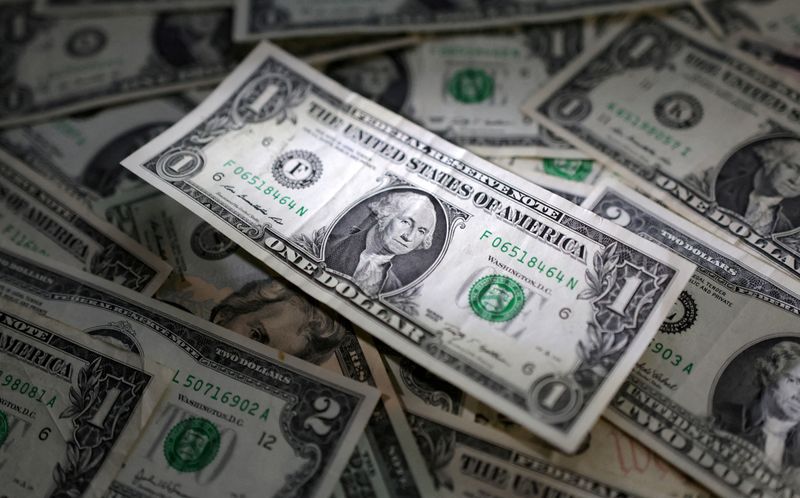By Samuel Indyk and Tom Westbrook
LONDON (Reuters) -The dollar edged higher on Wednesday, heading for its biggest monthly gain since September, while the yen faced its sharpest monthly drop in almost a year as traders awaited a U.S. rates decision.
The has gained 2.1% against a basket of major currencies this month as markets lowered expectations on the speed and scale of U.S. rate cuts given strong economic data and caution from central bankers.
On the day, the dollar index was up 0.1% to 103.52, just below Monday’s 103.82 that matched last week’s seven-week high.
A slowdown in Australian inflation pushed the dollar down by as much as 0.5% to $0.6560 and rallied bonds as investors increased wagers on interest rate cuts, while a moderation in French and German inflation kept the euro lower.
Elsewhere moves were modest, and the yen showed little immediate reaction to a hawkish tilt at the Bank of Japan, while markets waited news from the Federal Reserve.
The yen is down 4.5% on the dollar this month and headed for its largest monthly drop since February last year as weak wage data and cooling inflation leave room for the Bank of Japan to take its time raising rates.
However, a summary of its January meeting on Wednesday showed its resolve strengthening and conditions supporting an end to negative rates relatively soon.
The Federal Reserve is expected to hold U.S. interest rates steady on Wednesday but flag future cuts by dropping language suggesting further hikes.
Interest rate futures price a roughly 45% chance of a Fed rate cut in March, down from almost 90% at the end of last year.
“If we get a softer tone from (Federal Reserve Chair Jerome) Powell then I think there’s a risk that the dollar would weaken,” said Dane Cekov, senior macro and FX strategist at Nordea.
Ahead of the Fed, Cekov highlighted the U.S Treasury’s quarterly refunding announcement and the closely-watched employment cost index for evidence of wage growth in the fourth quarter that could determine the dollar outlook.
French EU-harmonised inflation fell to 3.4% in January from 4.1% in December, while inflation in six economically important German states also slowed in January, suggesting that national inflation has resumed its downward trajectory.
A slowdown in Germany would foreshadow the same in euro zone numbers due on Thursday and reinforce market expectations that European policymakers could start rate cuts earlier than the ECB has signalled.
The euro was last down 0.1% at $1.0838, while sterling fell by a similar amount to $1.2684 before the Bank of England’s policy announcement on Thursday, where rates are also set to be unchanged.

Expectations of interest rate cuts in China have driven a bond market rally this month while the yuan has been squeezed by a flight from China’s crumbling equity markets.
The Chinese currency held at 7.1771 on Wednesday, down 1% for the month. China’s manufacturing activity in January contracted for a fourth straight month, an official survey showed, suggesting the sector was struggling for momentum.
















